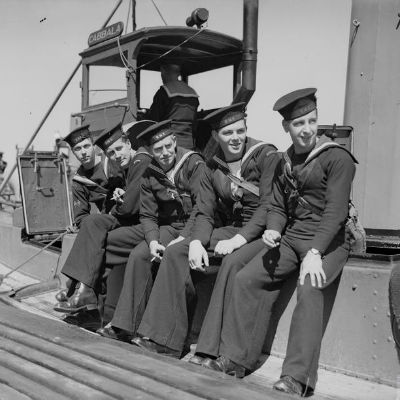Neat handwriting, accurate spelling, good mnemonics and integrity. All were key attributes when it came to selection for The Communications Branch.
Good handwriting meant messages were relaid accurately. Spelling went hand in hand with this. The ability to memorise lots of information was crucial and integrity was key due to the sensitive nature of the information communicated. All were abilities that Rating Seaman Brooks must have shown during basic training. Until October 1941, Rating Seaman Brooks spent just over 3 months training to become an Ordinary Signalman of the Communications Branch.
It was regarded as ‘the cleanest job in the navy’, the brains of the fleet. In today’s world of satellite communications, Navies still use international alphabet flags for visual signalling, allowing vessels to communicate while maintaining radio silence.
Under peacetime conditions, regular ratings undertook twenty-five weeks of training, Hostilities Only ratings had just fourteen. In those hectic three and a half months signal trainees learnt the use of semaphore, flashing lights and flags. They needed little equipment for training. Buzzers and signal lamps were used for Morse Code and a flagpole for hoisting signals. A parade ground became the open-sea with marching men, each representing vessels in convoy, being manoeuvred by signallers. They could be seen standing in line around the edges of HMS Collingwood’s playing fields exercising their semaphore flags.
All over the world ships follow the International Maritime Flag System. This system has been in use for over 150 years. In 1857 the International Code of Signals was published by the British Board of Trade to establish rules for maritime communication everyone would understand. The original code consisted of 18 flags that could be combined to signal up to 17,000 messages. By 1940 a Royal Naval Signaller had to master 86 flags & pennants.
1942 portrait of a Leading Signalman holding an Aldis lamp © IWM 2690
As well as semaphore and signal flags, the trainee signalman would also need to master the Aldis Lamp and Morse code.
The idea of communicating via lamp using flashing dots and dashes from a lantern was first put into practice by Captain Philip Colomb RN in 1867. The ‘Colomb’ shutter was used to differentiate a beam of light into an early form of Morse code. With the invention of the electric Aldis Lamp (named after its inventor A.C.W. Aldis), the angle of the light bean became more narrow, brighter and more directional. This proved ideal for ships in close convoy to communicate day and night without being spotted by U-boats.
On 13th October 1941 Ordinary Signalman Brooks left HMS Collingwood. He travelled north to Newcastle-upon-Tyne where his first ship waited. Berthed on the River Tyne, under North Shields Command, in the shadow of Admiral Collingwood, my Father went to war on HMT Southcoates.









'Communications Branch' has no comments
Be the first to comment this post!